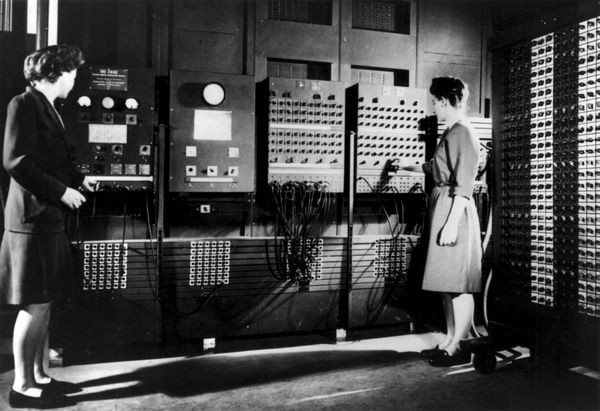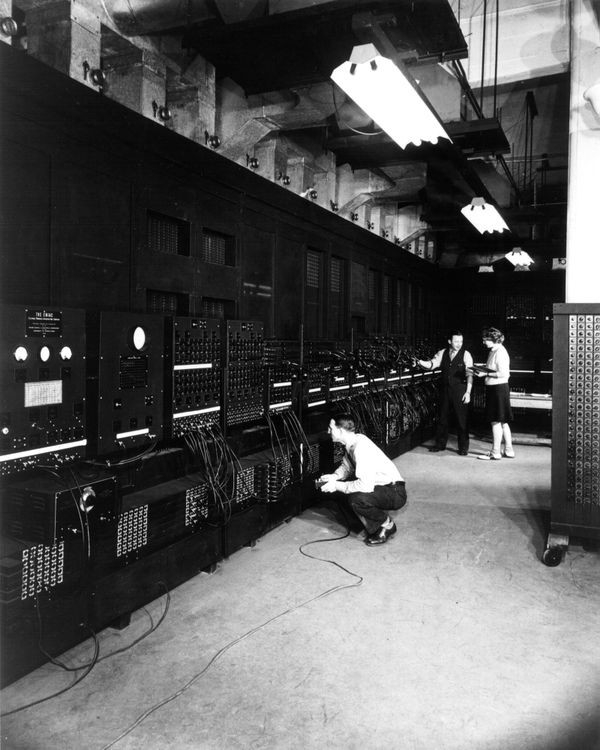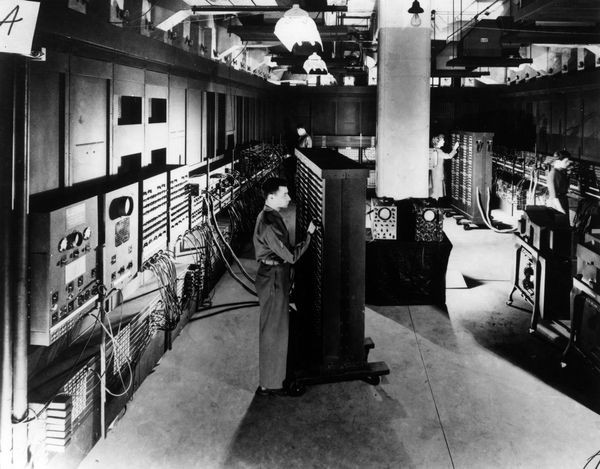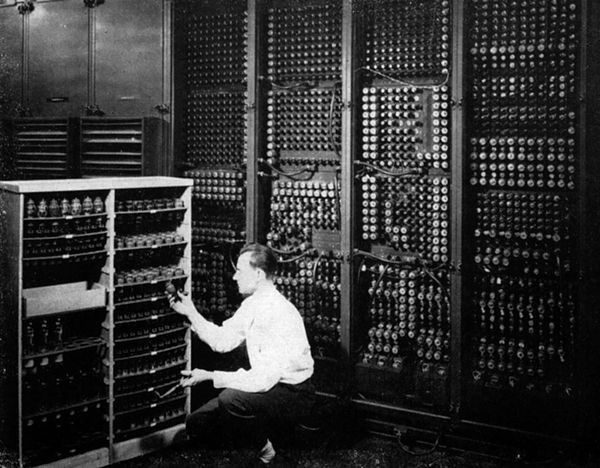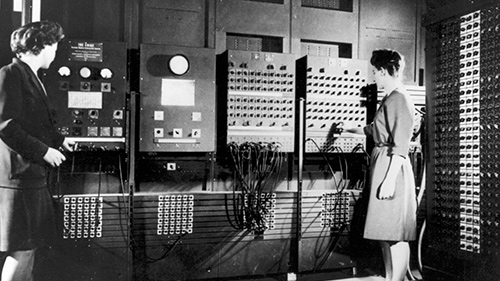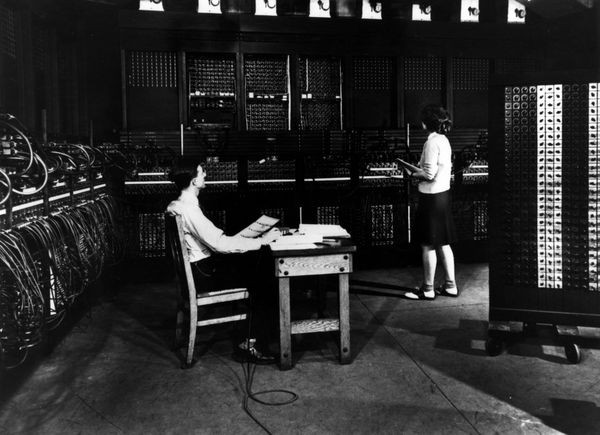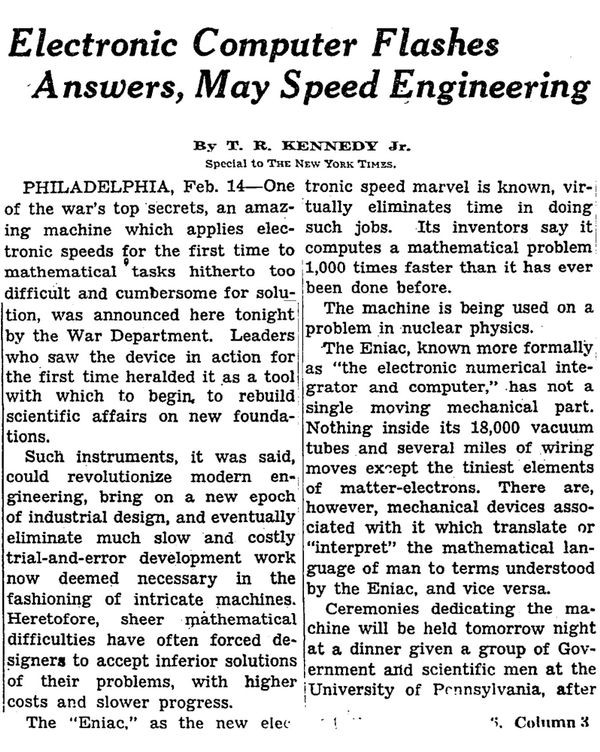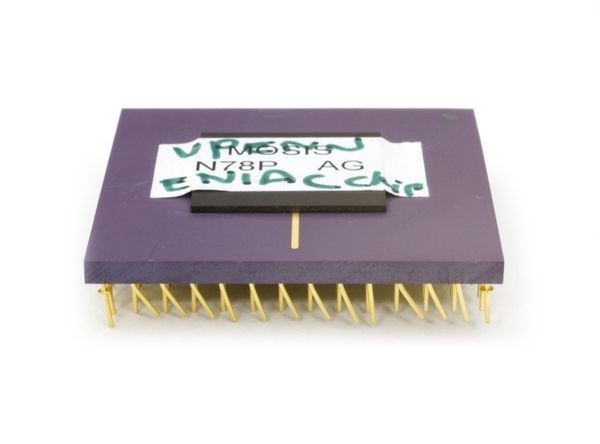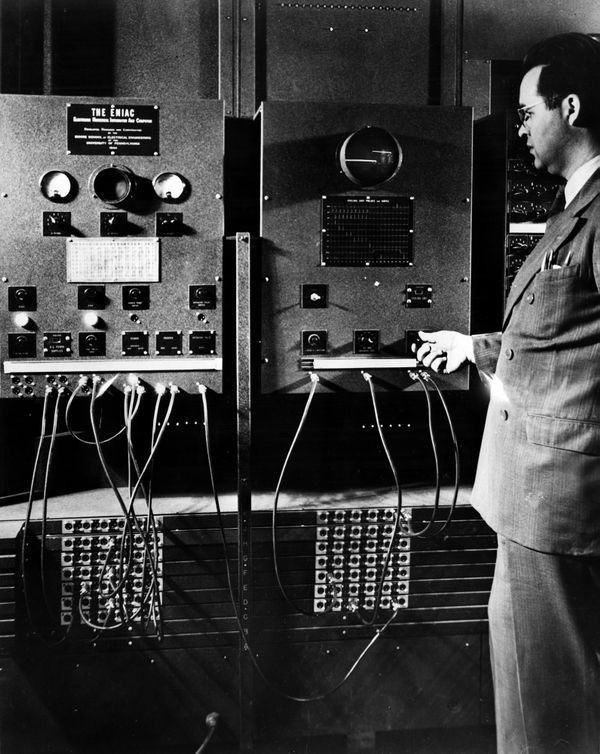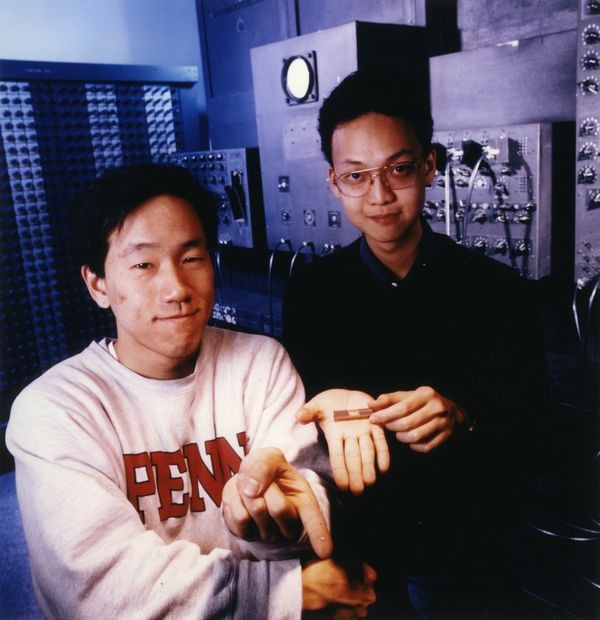ENIAC
ENIAC programmers
ENIAC programmers Frances Bilas (later Frances Spence) and Betty Jean Jennings (later Jean Bartik) stand at its main control panels. Both held degrees in mathematics. Bilas operated the Moore School’s Differential Analyzer before joining the ENIAC project.
ENIAC
In 1942, physicist John Mauchly proposed an all-electronic calculating machine. The U.S. Army, meanwhile, needed to calculate complex wartime ballistics tables. Proposal met patron.
The result was ENIAC (Electronic Numerical Integrator And Computer), built between 1943 and 1945—the first large-scale computer to run at electronic speed without being slowed by any mechanical parts. For a decade, until a 1955 lightning strike, ENIAC may have run more calculations than all mankind had done up to that point.
ENIAC being set up
Designing the correct configuration for each new problem, and then connecting the wires and setting the switches, took many days.
View Artifact DetailENIAC publicity photo
After WWII, ENIAC was declassified and widely publicized. Operating the machine in this photo are Cpl. Irwin Goldstein, PFC Homer Spence, Betty Jean Jennings, and Frances Bilas.
View Artifact DetailENIAC tube change
ENIAC lost one vacuum tube roughly every day or two. With almost 18,000 tubes, locating and replacing the failed one was challenging. Over time, however, the maintenance team developed the skill to fix a problem in just 15 minutes.
View Artifact DetailENIAC being set up
An ENIAC engineer and programmer verify the configuration near the multiplier racks. The 20 single-number accumulators were its primary functional units, but ENIAC also had special units for multiplication, division, and square roots.
View Artifact Detail18,000 Chances to Fail
ENIAC glowed with an unprecedented 18,000 vacuum tubes. How do you keep so many working simultaneously?
Engineers created strict circuit design guidelines to maximize reliability. They ran extensive tests on components and avoided pushing them to their limits, which included operating vacuum tubes well below their maximum voltages to prolong their life.
The New York Times ENIAC article
On February 15, 1946, the existence of the previously classified ENIAC became front-page news in The New York Times. To many, this marks the start of the electronic computer age.
View Artifact DetailENIAC on a chip
In celebration of ENIAC’s 50th Anniversary, the machine was reimplemented using modern integrated circuit technology. The room-sized computer could now fit in the palm of your hand.
View Artifact DetailHarry Huskey operates ENIAC
ENIAC team member Harry Huskey at the machine’s Cycling Unit, which supplied the timing signals for the functional units and synchronized the machine.
View Artifact DetailUndergraduates hold the ENIAC test chip
University of Pennsylvania undergraduates James Tau and Lin Ping Ang were part of the team that recreated the room-sized ENIAC as a single integrated circuit chip.
View Artifact Detail